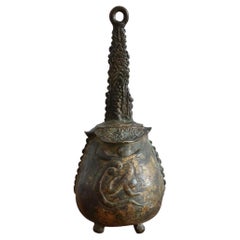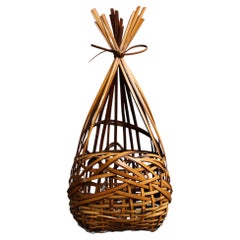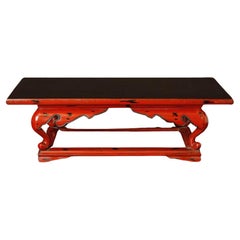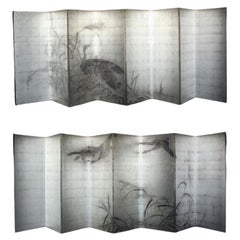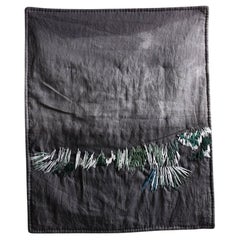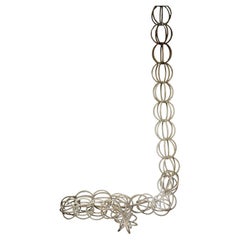Japan - Asian Art and Furniture
19th Century Chinese Qing Antique Japan - Asian Art and Furniture
Brass, Bronze
1950s Japanese Japonisme Vintage Japan - Asian Art and Furniture
Bamboo
Late 17th Century Japanese Edo Antique Japan - Asian Art and Furniture
Wood, Lacquer
19th Century Japanese Antique Japan - Asian Art and Furniture
Paper
2010s Japanese Modern Japan - Asian Art and Furniture
Linen
20th Century Japanese Japan - Asian Art and Furniture
Copper
18th Century Japanese Antique Japan - Asian Art and Furniture
Wood
19th Century Japanese Edo Antique Japan - Asian Art and Furniture
Bronze
19th Century Antique Japan - Asian Art and Furniture
Wood
Early 20th Century Japanese Japan - Asian Art and Furniture
Wood
1920s Japanese Japonisme Vintage Japan - Asian Art and Furniture
Silk, Wood
19th Century Japanese Antique Japan - Asian Art and Furniture
Paper
19th Century Japanese Meiji Antique Japan - Asian Art and Furniture
Linen
20th Century Japanese Japan - Asian Art and Furniture
Paper
Early 20th Century Japanese Taisho Japan - Asian Art and Furniture
Wood
Mid-20th Century Japanese Showa Japan - Asian Art and Furniture
Wood
1930s Japanese Japonisme Vintage Japan - Asian Art and Furniture
Gold Leaf
1970s Japanese Japonisme Vintage Japan - Asian Art and Furniture
Canvas, Silk
Late 20th Century Japanese Showa Japan - Asian Art and Furniture
Porcelain
1970s Japanese Japonisme Vintage Japan - Asian Art and Furniture
Canvas, Silk
19th Century Hungarian Antique Japan - Asian Art and Furniture
Ceramic
1960s Japanese Japonisme Vintage Japan - Asian Art and Furniture
Silk, Wood
Early 20th Century Japanese Japan - Asian Art and Furniture
Wood
1980s Japanese Japonisme Vintage Japan - Asian Art and Furniture
Canvas, Silk
1970s Japanese Japonisme Vintage Japan - Asian Art and Furniture
Silk, Canvas
Early 20th Century Japanese Japan - Asian Art and Furniture
Wood
Early 20th Century Japanese Taisho Japan - Asian Art and Furniture
Wood
20th Century Japanese Japan - Asian Art and Furniture
Copper
20th Century Japanese Showa Japan - Asian Art and Furniture
Wood
20th Century Japanese Japan - Asian Art and Furniture
Iron
Mid-20th Century Japanese Showa Japan - Asian Art and Furniture
Wood
1890s Japanese Meiji Antique Japan - Asian Art and Furniture
Wood
20th Century Japan - Asian Art and Furniture
Paper
1970s Japanese Japonisme Vintage Japan - Asian Art and Furniture
Canvas, Silk
1920s Japanese Taisho Vintage Japan - Asian Art and Furniture
Silk
21st Century and Contemporary Japanese Japan - Asian Art and Furniture
Porcelain
Mid-20th Century Japanese Showa Japan - Asian Art and Furniture
Granite
Early 20th Century Taisho Japan - Asian Art and Furniture
Wood
Late 19th Century Antique Japan - Asian Art and Furniture
Wood
20th Century Japanese Japan - Asian Art and Furniture
Bamboo
Early 20th Century Japanese Taisho Japan - Asian Art and Furniture
Wood
Early 20th Century Taisho Japan - Asian Art and Furniture
Wood
19th Century Japanese Antique Japan - Asian Art and Furniture
Paper
18th Century Japanese Antique Japan - Asian Art and Furniture
Wood
20th Century Japanese Showa Japan - Asian Art and Furniture
Ceramic
21st Century and Contemporary Japanese Japan - Asian Art and Furniture
Porcelain
19th Century Japanese Antique Japan - Asian Art and Furniture
Wood
20th Century Japanese Taisho Japan - Asian Art and Furniture
Wood, Lacquer
20th Century Japanese Showa Japan - Asian Art and Furniture
Bronze
20th Century Japanese Showa Japan - Asian Art and Furniture
Copper
20th Century Japanese Japan - Asian Art and Furniture
Bamboo
1960s Japanese Japonisme Vintage Japan - Asian Art and Furniture
Silk, Wood
Early 20th Century Japanese Japan - Asian Art and Furniture
Wood
Early 20th Century Japanese Meiji Japan - Asian Art and Furniture
Gold Leaf
19th Century Japanese Antique Japan - Asian Art and Furniture
Iron
19th Century Japanese Antique Japan - Asian Art and Furniture
Cedar, Pine
2010s Japanese Post-Modern Japan - Asian Art and Furniture
Steel
2010s Japanese Modern Japan - Asian Art and Furniture
Linen
1960s Japanese Japonisme Vintage Japan - Asian Art and Furniture
Gold Leaf
20th Century Japanese Japan - Asian Art and Furniture
Copper
Read More
Symbols of Happiness and Rebirth Adorn This Japanese Satsuma Bowl
Decorated with white cranes and the sought-after thousand-butterflies motif, the Meiji-period vessel offers both a celebration of traditional aesthetics and a clear reflection of the era’s appetite for exquisite export pieces.
Chicago’s Pagoda Red Has a Spirited Mix of Asian Antiques and Bold New Art
For 25 years, gallerist Betsy Nathan has leveraged her keen eye and key connections to bring a unique selection of rare finds to the market.
In L.A., Gallerist JF Chen Has Long Championed Eclectic Blue-Chip Design
Now working alongside his daughter Bianca, dealer Joel Chen has presented a most covetable array of antiques, art and contemporary creations for more than 40 years.
12 Calming Spaces Inspired by Japanese Design
From cherry-blossom-adorned walls paired with glamorous lighting to wood-paneled ceilings above checkerboard-patterned chairs, these 12 spaces seamlessly blend Eastern and Western aesthetics.
Rodrigo Rivero Lake’s Mexico City Showroom Is a Museum-Worthy Trove of Spanish Colonial and Asian Antiques
The dealer and curator has spent the past 50 years amassing a collection of exceptional art, furniture and architectural elements that trace the cultural influence of the Spanish empire from Europe to the Americas and beyond.
16 Refined Asian-Inspired Interiors
These spaces exemplify how Eastern elements elevate a home's decor.
